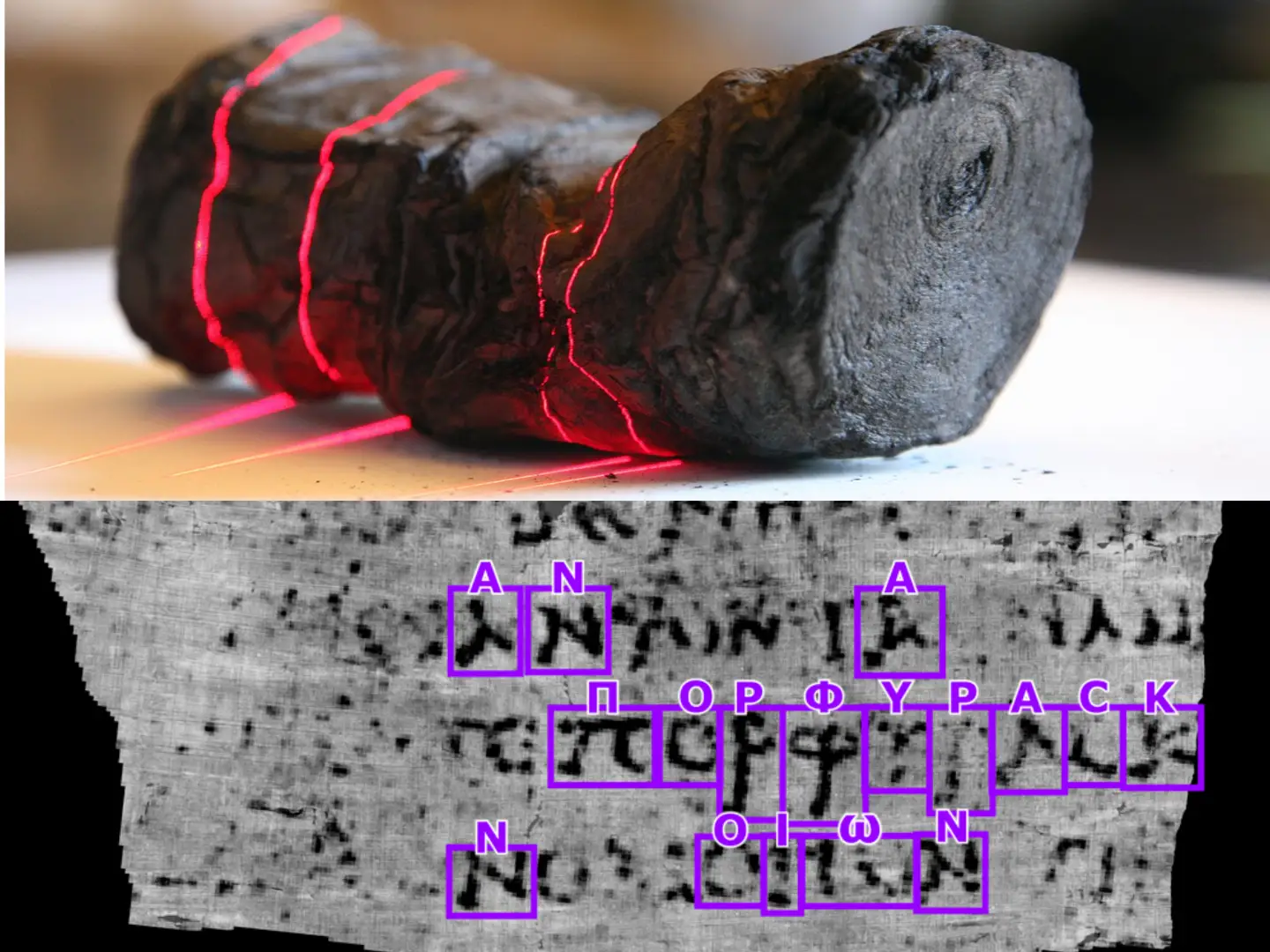In a remarkable achievement, experts have successfully decoded an ancient word from a carbonized Herculaneum scroll that was preserved for nearly two millennia after being buried beneath volcanic ash during the catastrophic eruption of Mount Vesuvius in 79 AD. This significant breakthrough was made possible through the application of cutting-edge artificial intelligence (AI) technology.
A Glimpse into History’s Ashes
The eruption of Mount Vesuvius nearly 2,000 years ago had devastating consequences for the Roman town of Herculaneum, burying it under layers of volcanic ash. Along with the town, countless written texts and historical treasures were lost, seemingly forever. However, thanks to the relentless efforts of researchers, we are gaining a glimpse into history’s ashes.
AI Rescues Ancient Knowledge
Professor Brent Seales, a computer scientist at the University of Kentucky, declared this achievement with enthusiasm. This marks a significant milestone in the field of digital restoration as it represents the first successfully recovered text from one of these rolled-up, intact scrolls.
The collaboration of experts in this field has been a remarkable journey. Since the project’s inception, they have managed to unearth more letters and words from the ancient scroll, providing a tantalizing glimpse into the past.
Support from Silicon Valley Investors
Silicon Valley investors have played a crucial role in supporting this ambitious undertaking. These investors offered cash incentives to individuals who could successfully extract legible words from the fragile, ancient scrolls. Their support has been instrumental in advancing the study of these invaluable artifacts.
The “Vesuvius Challenge”
To aid in the deciphering of these ancient texts, Professor Seales and his team initiated what they called the “Vesuvius challenge.” They released thousands of 3D X-ray images of two scrolls and various fragments to the public. Additionally, they provided access to an AI system they had specifically trained to read the letters within the scrolls.
Purple and Beyond
During the Vesuvius challenge, two individuals from different parts of the world independently read the same ancient Greek word in one of the scrolls: “πορφύραc,” which translates to “purple.” The translation is a glimpse into a world of royalty, wealth, and even mockery.
Dr. Federica Nicolardi, a papyrologist at the University of Naples Federico II, revealed that they have successfully deciphered three lines of the scroll, containing up to 10 letters, with more anticipated to become legible. Recent progress has exposed at least four columns of text.
What’s Next?
These scrolls are believed to have belonged to Lucius Calpurnius Piso Caesoninus, a senior Roman statesman and the father-in-law of Julius Caesar. While the texts analyzed thus far have been written in ancient Greek, there is hope that some may be in Latin.
The discovery has opened up a world of possibilities, leading scholars and researchers to anticipate further revelations. The strong belief is that there is much more to uncover within this treasure trove of knowledge, potentially including new plays of Sophocles, poems of Sappho, the Annals of Ennius, lost books of Livy, and even documentary papyri—letters and business papers.
For Professor Seales and his team, this endeavor represents more than just the recovery of lost words. It is a voyage into the past and a promise of untold stories and knowledge yet to be revealed. The journey to unlock the secrets held within these ancient scrolls continues, and as Professor Seales rightly puts it, “Now it is time to explore.”




